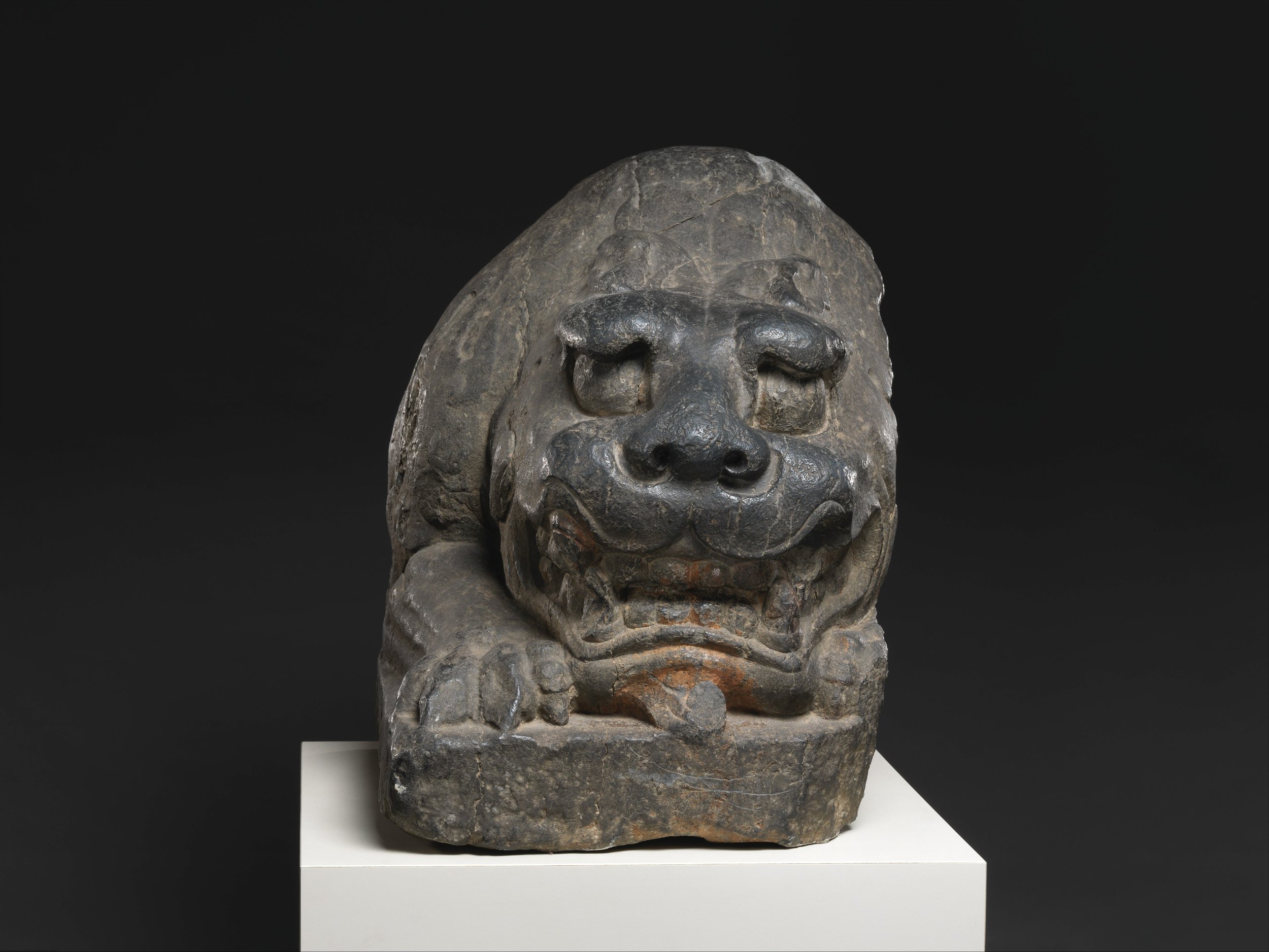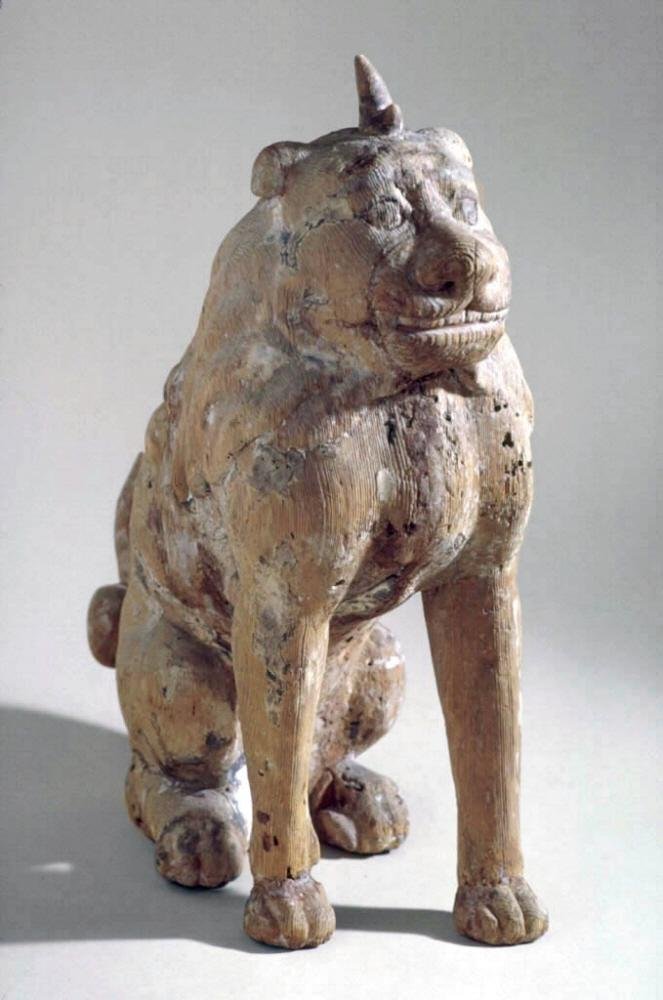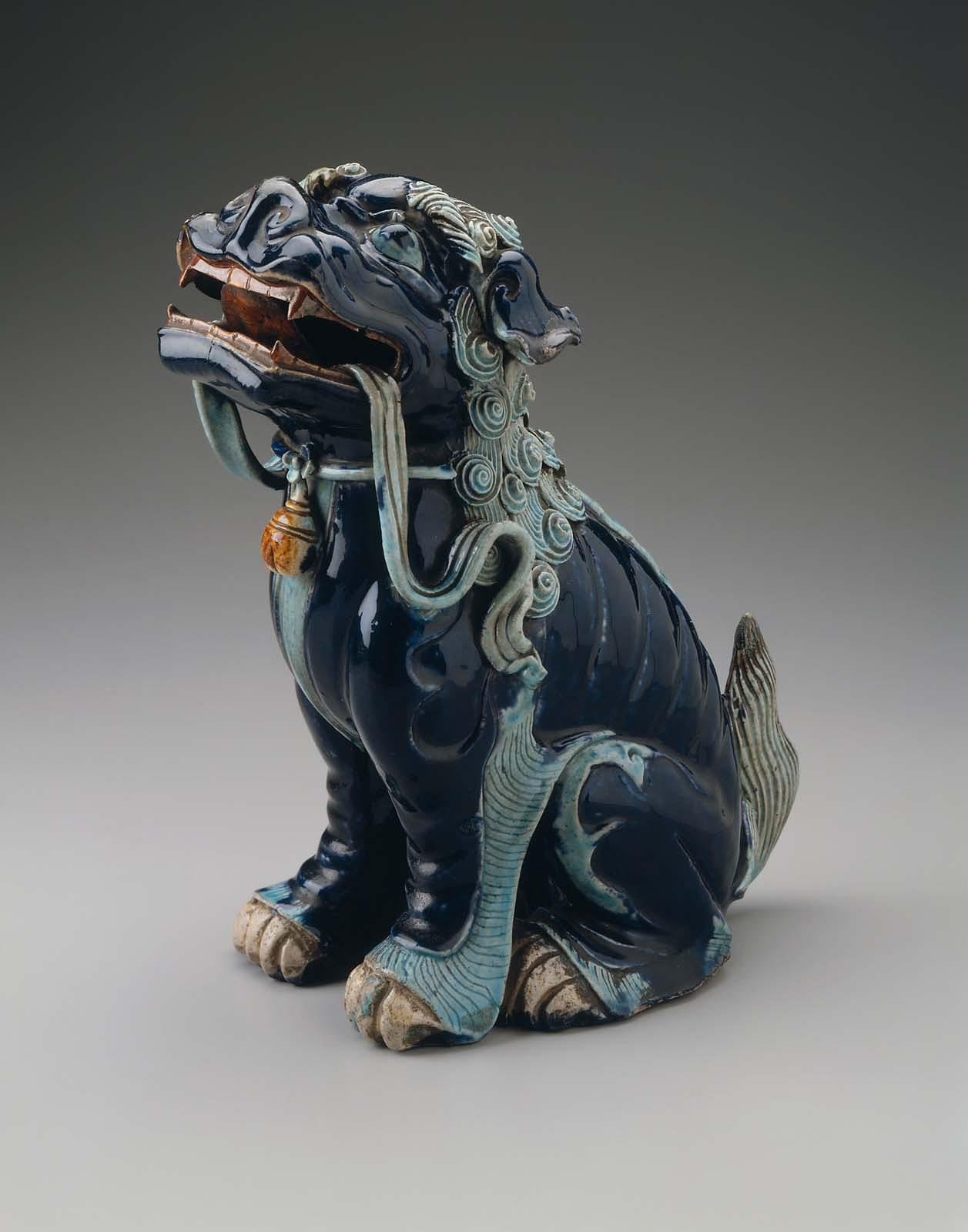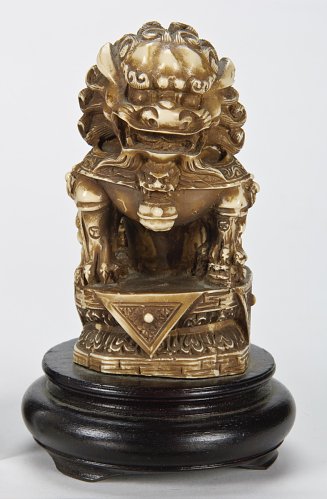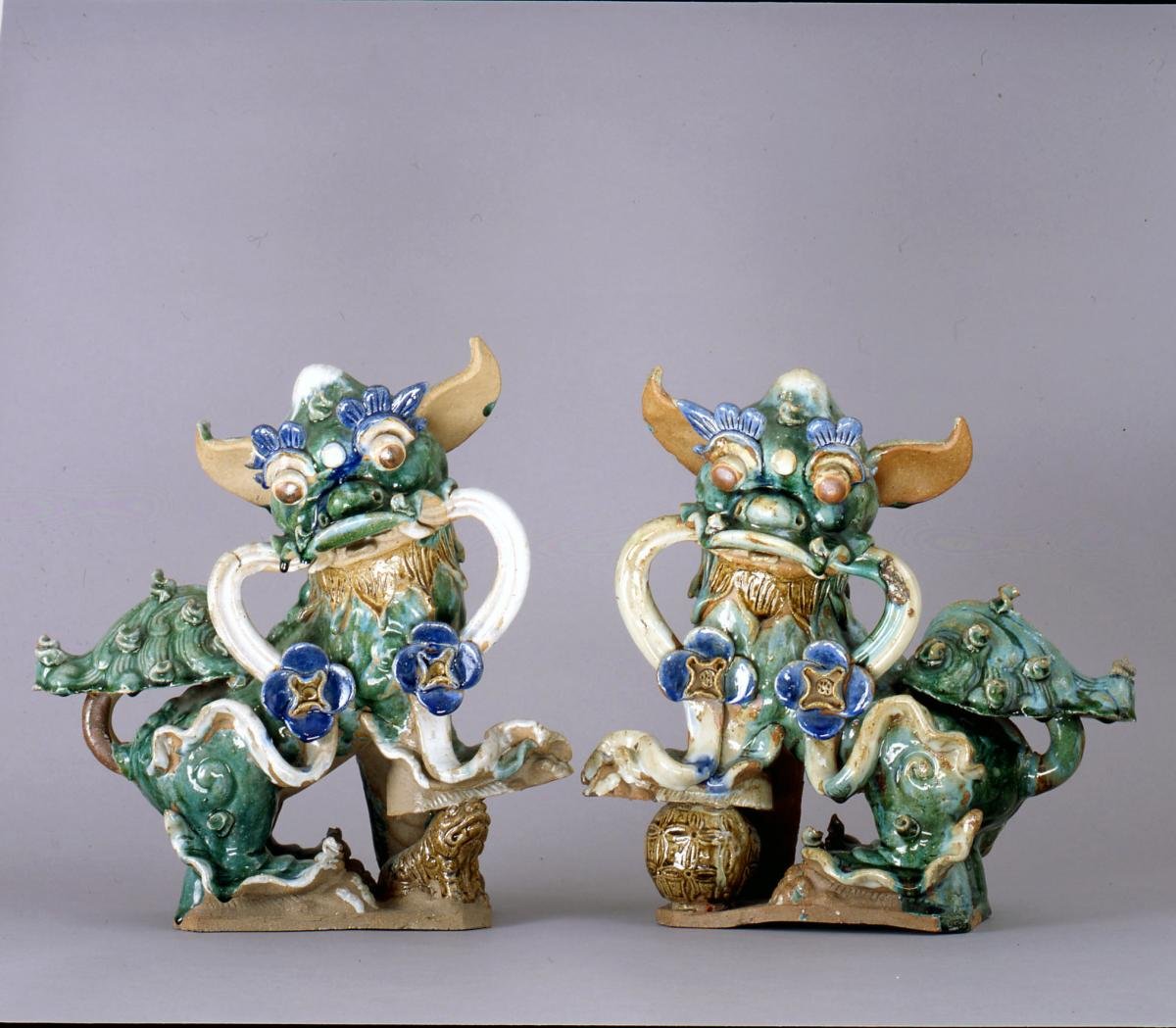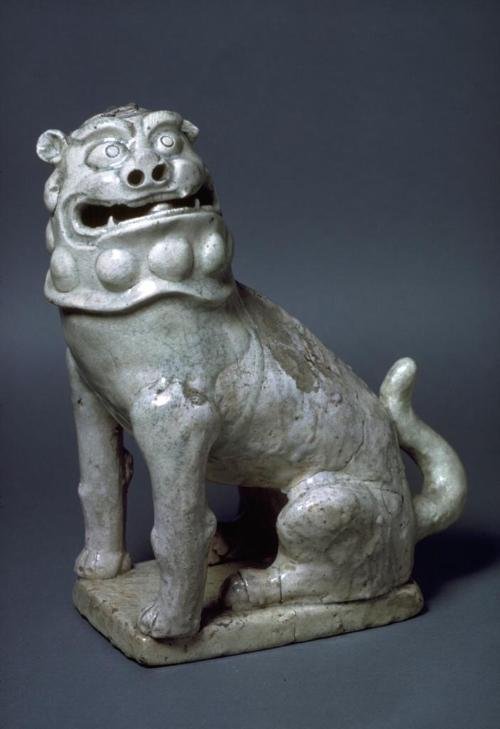Are They Lions or Dogs?
The House attempts to unpack the mysterious and confusing origin of these misunderstood creatures.
You know what The House is talking about, right? The statues that stand guard at the entrances of shrines, temples, tombs, and other important places?
Are they fu dogs… or is it foo dogs? Shishi… or shisa? Guardian lions…lion dogs…koma inu…?
What is the correct way to refer to the statues? Are they Chinese? Japanese? Both? Neither?
Perspective 1: They’re lions. What is this nonsense about dogs?
Today, lions are mainly associated with Africa, but in ancient times, Asiatic lions roamed around the Middle East and India, where the lion was a sacred animal to Hindus. When Buddhism spread from India to China, the Chinese adopted the lion as a symbol of strength and protection. According to The Metropolitan Museum of Art, “Pairs of stone lions have been found protecting Han-dynasty tombs (206 B.C.–220 A.D.) and they became more prevalent following the inclusion of lion iconography in Buddhist cave temples in northern China during the fifth and sixth centuries.”
Early Chinese guardian lions, like the ones pictured above, were carved from stone and bore a strong resemblance to actual lions (but they could also pass for tigers in The House’s humble opinion). This particular pair of limestone lions dates back to the Northern Qi dynasty (mid-6th century) and today resides in New York at The Metropolitan Museum of Art.
What is the significance of guardian lions?
Perhaps for obvious reasons, the lions symbolize power and strength, and are said to protect the building they guard from evil spirits and intruders. They are also said to bring good luck and prosperity.
Over time, the lions became more popular and were used to guard other important secular buildings, such as palaces, government offices, and wealthy homes. But something else happened - sexual dimorphism. In a pair of lions, one was depicted as male and one female (even though they would typically both have manes, so we are not giving any points for accuracy). The male lion usually had a ball under its paw, symbolizing dominion over the world, while the female lion was depicted with a cub and believed to protect the home.
The guardian lions featured above are described as “dogs of fo” and were made in the late 17th to early 18th century. In both sets, a cub climbs the female’s front leg. The male on the right rests his leg on ball. The male on the left rests his paw on a stick, which would have held a sliding ball in place (now missing). Originally they were made as items for a scholar’s desk and would have held tapers of burning incense to perfume the room.
Compare these colorful sets of guardian lions to the older stone lions, and you will see a much more stylized form — with curly manes, floofy tails, and whimsical expressions.
Perspective 2: One is a Lion and One is a Dog; That’s Why They Are Called Lion-Dogs
To explore perspective #2, we must leave China and head to Japan, which follows the original spread of these figures. For those keeping track, the lion statues started in India, moved to China, and were then brought to Japan by Buddhist monks in the 6th century, where they came to be called koma-inu (狛犬), which is translated to lion-dog but literally means “Korean dog”. Komainu are typically placed in pairs at the entrances of Shinto shrines and Buddhist temples. Like shishi, they are believed to protect the shrine or temple from evil spirits, and were subsequently placed in front of the entrances and homes and business to protect them from evil forces and bring good fortune.
But there is an interesting — and significant — difference between komainu and Chinese guardian lions that may shed some light on how the term “lion dog” came into use. In a pair, one guardian is a lion and the other is a dog. Sometimes the dog — or both — has horns. According to tradition, the guardian lion opens its mouth as if saying “ah,” and the guardian dog closes its mouth as if saying “un,” referencing the beginning and the end of the Sanskrit alphabet, and representing a complete cycle. Sometimes they are affectionately called the “ah” lion and “un” dog.
Horned dog with mouth closed…
…and lion with mouth open. This pair is from the Asian Art Museum’s online collection
Over time, the differences between them disappeared and now they are both called koma inu. Compare the contemporary set of komainu below to the older set above, and you will note that the appearance of the creatures is less distinct. Also, the “ah” lion has two horns and the “un” dog has one horn, like a kirin or unicorn.
Contemporary pair of koma inu Painted by: Komatsu Miwa 小松美羽 and made by: Matsumoto Satoru 松本哲 . Reproduced by permission of the artist. © The Trustees of the British Museum.
In Okinawa, homes are protected by guardian lion-dogs called shisa. they consist of a male-female pair — a closed-mouth female to keep good spirits in the home and an open-mouthed male to scare off evil spirits.
So where does this leave us, dear readers?
Perspective 3: It Was All a Big Misunderstanding by Westerners
The origin of the phrase "foo dogs" is a matter of debate, and The House has not found a definitive answer. But here is a hypothesis:
The short answer is that “foo dog” is a mistranslation or garble of the Chinese word used to describe the lions, combined with a misunderstanding of a highly stylized depiction of a lion.
We know that the Chinese word for lion is “shi.” China Furniture Online explains that Chinese guardian lions are typically described by the material of which they are made or an adjective describing their properties. For example, a stone lion is shishi; a bronze lion is tongshi; and the Lion of Buddha is foshi.
Do you see where this is going?
The House suspects that the origin of the term “foo dogs” comes from a misunderstanding and rearrangement of the word fushi. In Chinese, “fu” means “blessing,” “prosperity,” or “good fortune.” So fushi are lions that bring good luck and prosperity.
Imagine that you are a Westerner who is encountering Chinese guardian lions for the first time… You ask someone, “What are these statues?” And you are told, probably through a translator, that they are “fushi,” which means lions of good fortune. Over time, maybe this explanation is garbled to ‘fu lions” and eventually to “fu dogs” or “foo dogs” as the statues’ appearance became more dog-like over time. Or perhaps the popularity of Staffordshire dogs in the Victorian era influenced the perception of these creatures as "dogs”?
That’s a theory, anyway….
If anyone can shed additional light on this matter, The House would be most grateful. In the meantime, here are some lovely examples of leonine/canine guardians.
Guardian Lion, c. 1880by Léon Parvillée (French, 1830–1885), from the collection of the Philadelphia Museum of Art. Léon Parvillée created plaques, vases, and sculptural objects inspired by non-Western models. With humor and technical skill, Parvillée embellishes his little temple lion with bright colored glazes that were allowed to run and blend.
Pair of bewildered-looking guardian lion dogs, stoneware with glaze, Japan, Edo Period, c. 1782.
Lion Dog, Ivory with applied patina, China, 18th-19th century, Qing Dynasty. from the collection of the Smithsonian Institution.
Horned koma-inu (in situ) outside the Kitano Tenmangu Shrine in Kyoto, Japan.
Pair of guardian lions from a temple in Santa Rosa, California, from the collection of the Museum of Sonoma County.
From the collection of the Asian Art Museum Online.
Guardian lion, 13th century, Japan, Kamakura period (1185–1333), wood with traces of pigment, from the collection of the Princeton University Art Museum.
Open-mouthed koma-inu (in situ) outside the Kitano Tenmangu Shrine in Kyoto, Japan.

